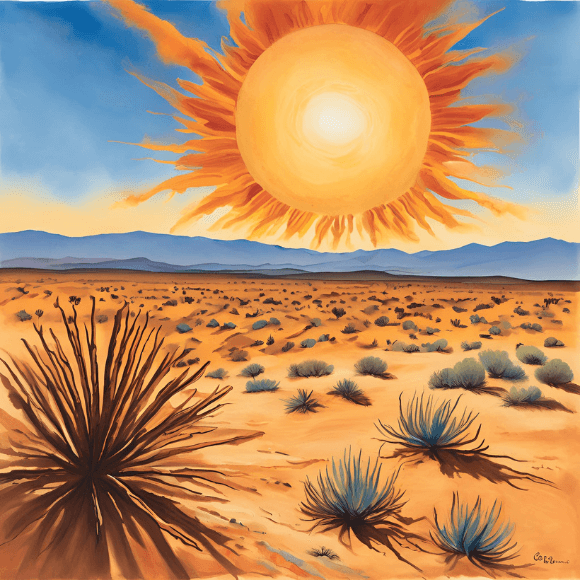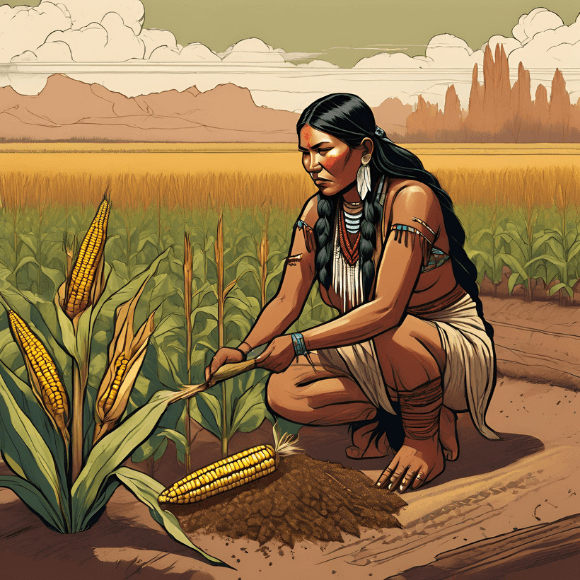Read by Michael Flamel

The scorching sun beat down on the dusty landscape as I arrived in Santa Fe, New Mexico—a land of rugged beauty and ancient traditions. The desert stretched out before me, a vast expanse of red rock formations and sparse vegetation, unlike anything I had encountered on my journey thus far.
Eager to explore the unique gardening practices of this arid region, I sought out the guidance of local experts who had learned to cultivate lush oases amidst the harsh desert terrain. It wasn’t long before I found myself in the company of members of the Native American community, who graciously welcomed me into their world.
“Welcome, Peter,” greeted Aiyana, an elder of the tribe, her voice as warm as the desert breeze. “We are honored to share our knowledge of gardening with you. Come, let us show you the ways of our ancestors.”
Together, we ventured into the heart of the desert, where hidden gardens flourished amidst the sunbaked earth. Aiyana and her companions taught me the art of xeriscaping—gardening with native plants that had evolved to thrive in the harsh desert climate. Their ancestors have been growing corn, beans, and squash in New Mexico for thousands of years, a practice they call three sisters gardening. I was reminded how this type of companion planting was an ancient practice, and that I would do well to keep it in mind when planning any future garden.
“These plants have sustained our people for generations,” Aiyana explained, her eyes sparkling with pride. “They provide us with nourishment for our bodies and medicine for our souls.”

As we worked side by side, tending the soil and resilient desert flora, I marveled at the ingenuity of the Native Americans who had learned to coexist with the land in perfect harmony. Their reverence for nature was palpable, their connection to the earth running deep within their veins.
“Tell me, Peter,” Aiyana asked, her voice soft with curiosity. “What brings you on this journey of gardening and self-discovery?”
I paused, feeling a lump form in my throat as memories of Sarah flooded my mind. “I lost my wife, Sarah, over a year ago,” I confessed, my voice catching. “Gardening was her passion, and I’m searching for solace in the soil, hoping to find healing amidst the beauty of nature.”
Aiyana nodded in understanding, her gaze filled with compassion. “The earth has a way of healing our wounds and soothing our souls,” she said, her words echoing in the stillness of the desert. “May you find the peace you seek in the embrace of the land.”

As the sun dipped below the horizon, casting a golden hue over the desert landscape, I stood amidst the vibrant blooms and aromatic sagebrush, feeling a sense of serenity wash over me. The desert, with its stark beauty and quiet strength, had captured my heart in ways I had never imagined.
In the days that followed, I continued to learn from the Native Americans, embracing their timeless wisdom and deep reverence for the earth. Together, we tended the gardens, sharing stories and laughter under the vast expanse of the desert sky.
And as I gazed out at the endless horizon, dotted with cacti and mesas, I couldn’t help but marvel at the resilience of the human spirit and the boundless wonders of the natural world. In the desert oasis of Santa Fe, I had found not only solace in the soil but also a renewed sense of purpose and connection—a gift that would stay with me long after I had left its sun-drenched embrace behind.
As I bid farewell to Aiyana and the Native American community, I carried with me the lessons of the desert—lessons of patience, perseverance, and the enduring power of faith. And as I journeyed onward, guided by the whispers of the wind and the beat of my own heart, I knew that no matter where life took me, the desert would always hold a special place in my soul—a sacred oasis of healing and hope amidst the vast expanse of the human experience.


 Previous
Previous

